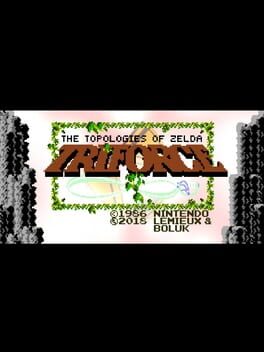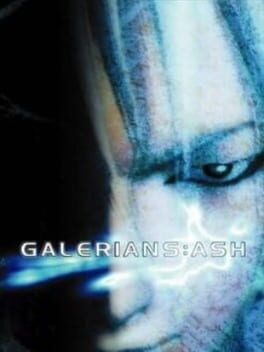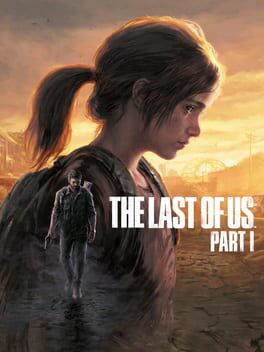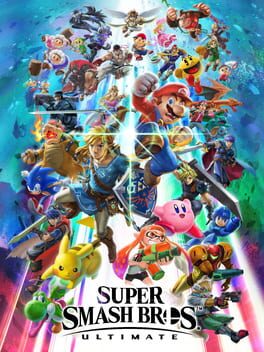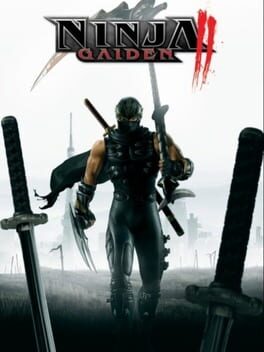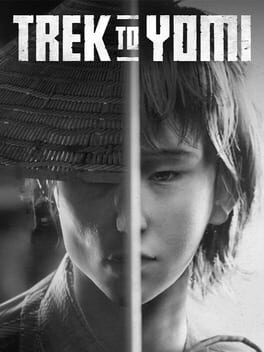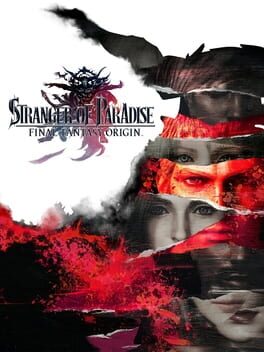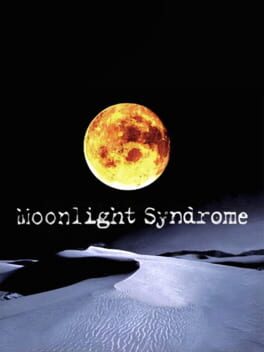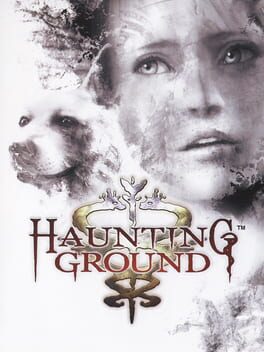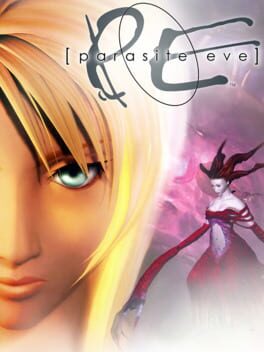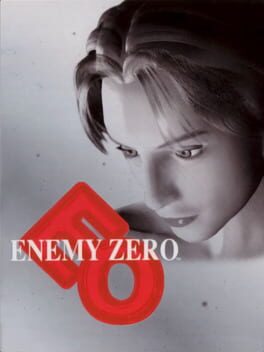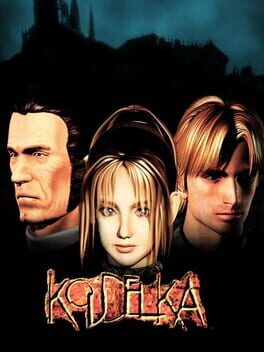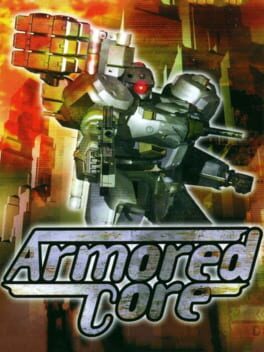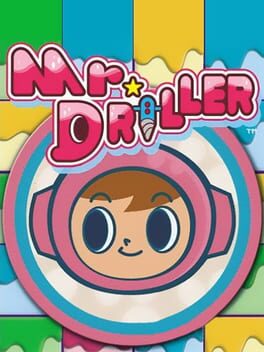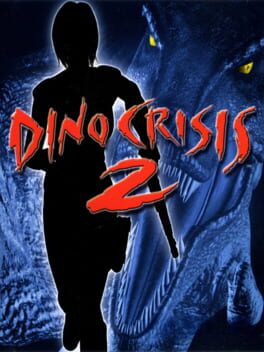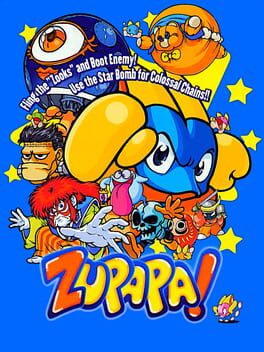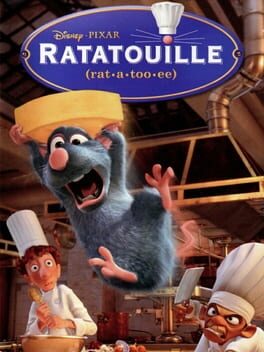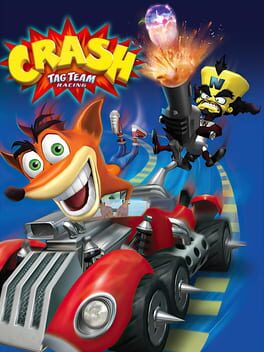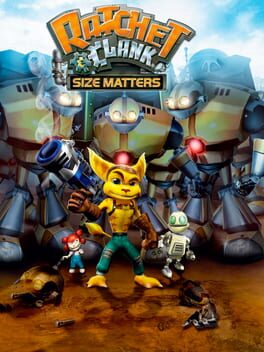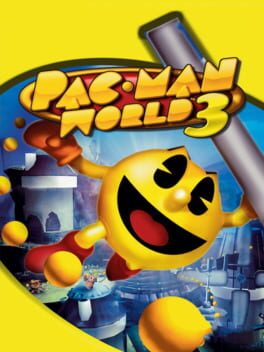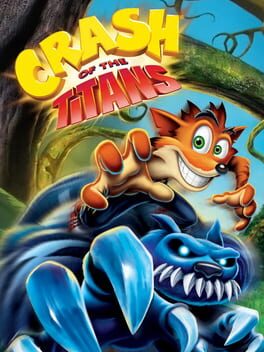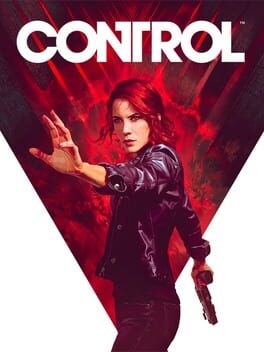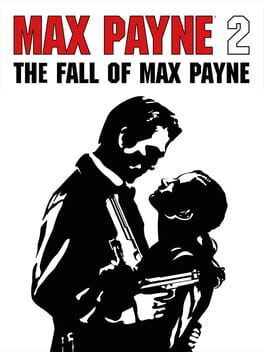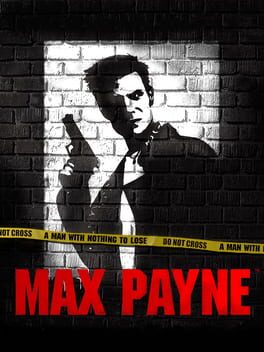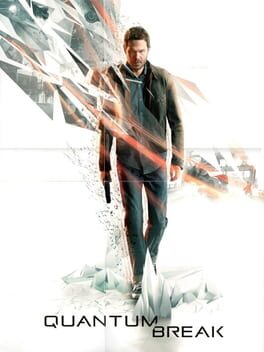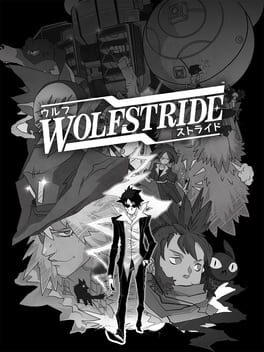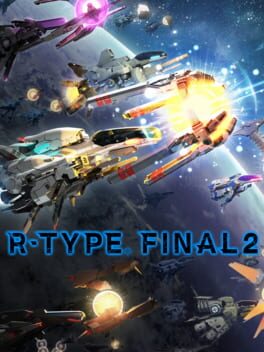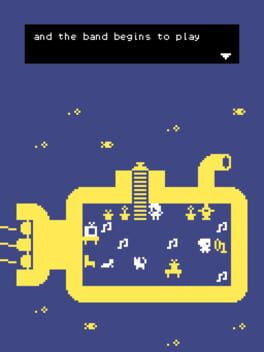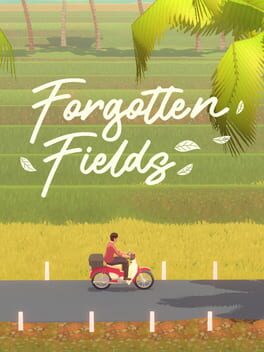IsnotmyNick
29 reviews liked by IsnotmyNick
Because in the end the world is a space to solve.
Sometimes with logic, sometimes with perspective, sometimes with force, sometimes by listening.
there is nature, but naturalistic logic is a lie. at least in modern life.
Curiously, puzzling the orientation and twisting the land we walk on -in the shape of a Donut, the industrial shape- the perspective reveals that there were no forests on earth, we made the forests, we imagined the height of that mountain. They suggested us, we accepted.
There are shades between "natural" progression and satisfying progression. we often confuse them.
This is very pessimistic, but I think that what defines us as people is usually the lies and truths that we accept.
Sometimes with logic, sometimes with perspective, sometimes with force, sometimes by listening.
there is nature, but naturalistic logic is a lie. at least in modern life.
Curiously, puzzling the orientation and twisting the land we walk on -in the shape of a Donut, the industrial shape- the perspective reveals that there were no forests on earth, we made the forests, we imagined the height of that mountain. They suggested us, we accepted.
There are shades between "natural" progression and satisfying progression. we often confuse them.
This is very pessimistic, but I think that what defines us as people is usually the lies and truths that we accept.
Death Stranding
2019
Some thoughts that I had stuck in my head:
Explore the world looking for a solution, a connection. Together. Maybe not physically, not by the same routes, maybe not delivering the same
It is difficult for Death Stranding to reach you playing it alone. Its nature emerges more easily online, and it's a great gesture and a statement of intent that you don't need a subscription to ps plus.
Kojima presents a digital world that is difficult to interpret and unite in words, a fiction that shoots directly into our reality.
Cursed, heartfelt, but also emotional. embrace the connections between things, but question them. a celebration of human duality
More prophetic than MGS2 and with better observation, generalizing and at the same time specifying the difficulties of our day to day, articulating them in the total art of videogames.
From the most abstract to the most literal, collective fears, traumas and very recognizable memories materialized. Visible, audible, and even palpable in an alien America full of dualities, of people who only intuit and show themselves through holograms and numbers.
But we are here. Maybe not next door, but in the same world. And the proof is the ladder that I have used to create an improvised bridge, I have left it here, for you, for me, for everyone. And that rope on the cliff, that capsule, that package on the ground. We are here.
Where the rejection of what forces us to leave this world is manifested in a kind of allergy for those who are more akin to these fears or have experienced them to the limit.
Where people are baptized for their present, for their office and condemned for their past. Where the heroes deliver packages and letters. They come to our futuristic shacks and install an esoteric Internet.
Everything is Sam Porter Bridges, whose name makes it STRONGLY EVIDENT what Death Stranding is about, and at the same time no, you cannot perfectly encompass anything as complex as earthly and afterlife connections, the natural and the mechanical, the Software and the Hardware, the "Ka" and "ha". reality and dreams. Much of Death Stranding's recontextualized iconography seems to suggest that.
It is a work that calls for thinking in an unprecedented way about it, because it offers an unprecedented reinterpretation of the transition and relationship with our environment, especially for gaming standards, obsessed with the mechanical-narrative relationship or the challenge, the suggestion and the satisfaction as a criterion to generate interpretations that are autopsies or descriptions. That in the best case.
At worst you have Far Cry 3.
Every species has the game in different facets and areas as a form of intellectual and emotional connection.
Children play and learn/relate, animals play to understand each other. We play to replace war.
Even before having sex we played.
Homo ludens. And Kojima welcomes a lot of this.
We need to be playful without losing focus.
There is no need for subtlety, just answer honestly to human questions. Use the forms of play as a response to the bitter obstacles of reality.
The example is the "Social Strand System", a mechanical reinterpretation of social networks where the game of deliveries and recovery of packages, manufactures and constructions has an impact on likes and statistics, but also on turning the environment into something more livable and peaceful, at the same time, shows that a more altruistic and ethical form of social interaction is possible.
It sounds naive to say that the reconstruction of the collective environment in an online video game is a lesson in altruism and community, even more so when there are likes involved, but the exercise of life begins somewhere, and now that we are waking up from this techno delirium -competitive utopian in which social networks had us flooded, now that we know how important they are to connect with each other more than to raise our ego, this "Social Strand System" shines more than in 2019.
Through the textures of slow gaming, an experiment of self-knowledge and updating is proposed, there is the unprecedented, in how the game confronts us with situations without necessarily connecting their thoughts or ideas and still achieving a certain cohesion. As in life, no one knows "what it is about" and yet we walk through it with what we own and what others leave for us.
And for a game that wants to embrace these themes without giving up the nature of its medium, its foundation, it's something really admirable.
-------------------
Not a single day goes by that I don't think about Death Stranding. Perhaps because of what has been happening in the world since 2020.
On arrival at Port Knot City.
How the corpses of people who have left explode, leaving an emotional and physical void in the form of a crater. Cities with people locked up, invisible. In the networks. In their inverted rainbows. How work becomes playing with its dozens of tools to transport, how enemies are my reflection, silence, likes, photos, stories... In life, how life can be everywhere.
And I can't even put into words practically anything that this game is for me. I plan to return to it in 2023 now that a sequel has been announced that begs the question: Should we have Connected?
Explore the world looking for a solution, a connection. Together. Maybe not physically, not by the same routes, maybe not delivering the same
It is difficult for Death Stranding to reach you playing it alone. Its nature emerges more easily online, and it's a great gesture and a statement of intent that you don't need a subscription to ps plus.
Kojima presents a digital world that is difficult to interpret and unite in words, a fiction that shoots directly into our reality.
Cursed, heartfelt, but also emotional. embrace the connections between things, but question them. a celebration of human duality
More prophetic than MGS2 and with better observation, generalizing and at the same time specifying the difficulties of our day to day, articulating them in the total art of videogames.
From the most abstract to the most literal, collective fears, traumas and very recognizable memories materialized. Visible, audible, and even palpable in an alien America full of dualities, of people who only intuit and show themselves through holograms and numbers.
But we are here. Maybe not next door, but in the same world. And the proof is the ladder that I have used to create an improvised bridge, I have left it here, for you, for me, for everyone. And that rope on the cliff, that capsule, that package on the ground. We are here.
Where the rejection of what forces us to leave this world is manifested in a kind of allergy for those who are more akin to these fears or have experienced them to the limit.
Where people are baptized for their present, for their office and condemned for their past. Where the heroes deliver packages and letters. They come to our futuristic shacks and install an esoteric Internet.
Everything is Sam Porter Bridges, whose name makes it STRONGLY EVIDENT what Death Stranding is about, and at the same time no, you cannot perfectly encompass anything as complex as earthly and afterlife connections, the natural and the mechanical, the Software and the Hardware, the "Ka" and "ha". reality and dreams. Much of Death Stranding's recontextualized iconography seems to suggest that.
It is a work that calls for thinking in an unprecedented way about it, because it offers an unprecedented reinterpretation of the transition and relationship with our environment, especially for gaming standards, obsessed with the mechanical-narrative relationship or the challenge, the suggestion and the satisfaction as a criterion to generate interpretations that are autopsies or descriptions. That in the best case.
At worst you have Far Cry 3.
Every species has the game in different facets and areas as a form of intellectual and emotional connection.
Children play and learn/relate, animals play to understand each other. We play to replace war.
Even before having sex we played.
Homo ludens. And Kojima welcomes a lot of this.
We need to be playful without losing focus.
There is no need for subtlety, just answer honestly to human questions. Use the forms of play as a response to the bitter obstacles of reality.
The example is the "Social Strand System", a mechanical reinterpretation of social networks where the game of deliveries and recovery of packages, manufactures and constructions has an impact on likes and statistics, but also on turning the environment into something more livable and peaceful, at the same time, shows that a more altruistic and ethical form of social interaction is possible.
It sounds naive to say that the reconstruction of the collective environment in an online video game is a lesson in altruism and community, even more so when there are likes involved, but the exercise of life begins somewhere, and now that we are waking up from this techno delirium -competitive utopian in which social networks had us flooded, now that we know how important they are to connect with each other more than to raise our ego, this "Social Strand System" shines more than in 2019.
Through the textures of slow gaming, an experiment of self-knowledge and updating is proposed, there is the unprecedented, in how the game confronts us with situations without necessarily connecting their thoughts or ideas and still achieving a certain cohesion. As in life, no one knows "what it is about" and yet we walk through it with what we own and what others leave for us.
And for a game that wants to embrace these themes without giving up the nature of its medium, its foundation, it's something really admirable.
-------------------
Not a single day goes by that I don't think about Death Stranding. Perhaps because of what has been happening in the world since 2020.
On arrival at Port Knot City.
How the corpses of people who have left explode, leaving an emotional and physical void in the form of a crater. Cities with people locked up, invisible. In the networks. In their inverted rainbows. How work becomes playing with its dozens of tools to transport, how enemies are my reflection, silence, likes, photos, stories... In life, how life can be everywhere.
And I can't even put into words practically anything that this game is for me. I plan to return to it in 2023 now that a sequel has been announced that begs the question: Should we have Connected?
Galerians: Ash
2002
psychotic bishounen, HIGH&LOW in a world of horror
-The most natural evolution of action-horror ever developed. Its spaces respond to that attempt at polygonal evolution of flat and reflective corridors to give a cleaner and more sterile sensation, not as charismatic or dirty as in the first Galerians, more aware of its diegetic and Futurist possibilities and limitations, Y2k after all, empty space, reflections and liquids become something mystical again. FULL 3D, a sense of grandeur with cameras and cutscenes - limited, but visually seductive - replace controlled motion planning in the psOne's pre-rendered backgrounds, and its kinesthetic orthotics also move toward agile gameplay.
Nothing very naturalistic, however: the corridors and rooms do respond to a certain habitability logic, but the menus get in the way of the action, the protagonist's portraits appear as reflections on the screen when we pick up an object (looking at us) and the characters act differently. robotics. I think of these things when someone says "ps2 desing" I think of the start of the BIOS immersing myself in a virtual world. I think of a universe built without pretensions to hide in what medium it is based, embracing the digital in its presentation, out of necessity or conviction.
-The game is full of brutally interesting images, (this is only from its first hours https://twitter.com/Ardwyw/status/1575538820933906432) something in the middle between Event Horizon, BLAME!, Matrix, Cronenberg (that body horror ), something from the old Squaresoft and a J-Pop concert... Although this is seen more from the cinematographic (Cutscenes) than from the cinematic (in-game camera and scenery) and it's a shame because if sections like the final boss were more abundant the canned structure in labyrinths whose transit is not so interesting from a spatial point of view, it's not that I don't appreciate slow gaming but those corridors... I don't know.
- The action is only interesting with the bosses or sub-bosses, the rest were exercises to control resources and my nervousness, something that I already have very internalized. I also don't ask for the incredible exploration of objects and their effects on my avatar and enemies that BAROQUE had but, meh
I really appreciate this Galerians: Ash, but through sight, not so much when I play it
Although I will definitely return.
Arduween 1x03
-The most natural evolution of action-horror ever developed. Its spaces respond to that attempt at polygonal evolution of flat and reflective corridors to give a cleaner and more sterile sensation, not as charismatic or dirty as in the first Galerians, more aware of its diegetic and Futurist possibilities and limitations, Y2k after all, empty space, reflections and liquids become something mystical again. FULL 3D, a sense of grandeur with cameras and cutscenes - limited, but visually seductive - replace controlled motion planning in the psOne's pre-rendered backgrounds, and its kinesthetic orthotics also move toward agile gameplay.
Nothing very naturalistic, however: the corridors and rooms do respond to a certain habitability logic, but the menus get in the way of the action, the protagonist's portraits appear as reflections on the screen when we pick up an object (looking at us) and the characters act differently. robotics. I think of these things when someone says "ps2 desing" I think of the start of the BIOS immersing myself in a virtual world. I think of a universe built without pretensions to hide in what medium it is based, embracing the digital in its presentation, out of necessity or conviction.
-The game is full of brutally interesting images, (this is only from its first hours https://twitter.com/Ardwyw/status/1575538820933906432) something in the middle between Event Horizon, BLAME!, Matrix, Cronenberg (that body horror ), something from the old Squaresoft and a J-Pop concert... Although this is seen more from the cinematographic (Cutscenes) than from the cinematic (in-game camera and scenery) and it's a shame because if sections like the final boss were more abundant the canned structure in labyrinths whose transit is not so interesting from a spatial point of view, it's not that I don't appreciate slow gaming but those corridors... I don't know.
- The action is only interesting with the bosses or sub-bosses, the rest were exercises to control resources and my nervousness, something that I already have very internalized. I also don't ask for the incredible exploration of objects and their effects on my avatar and enemies that BAROQUE had but, meh
I really appreciate this Galerians: Ash, but through sight, not so much when I play it
Although I will definitely return.
Arduween 1x03
Those who see art as a shortcut to prestige have a very distorted idea of what is "prestigious" - Look Kojima, creating spiritual connections through eschatology, total genius -, And few of this horrible ilk exist like Neil druckmann or conrad roset. Guys who use the medium of video games as a platform to satisfy their hunger for prominence and recognition. and incidentally, along the way, dividing in a problematic way the reception and conception of "arthouse" and pop games
I'm not going to blame them for Little Nightmares being read as an empty and morbid trip, because before that there was Playdead with his Limbo.
Neither of the obsession with the tone and fixation with photorealism without a plastic sense more typical than seeing the pores of Nathan Drake's skin, but, God, how I would like a timeline in which Roset and Druckmann are considered the worst in a way unanimous. Because they may not be the worst in general in the horror pile, but their popularity exposes the sad reality that some are interested in video games being validated by those who do not appreciate them in all their aspects, and those who need them to carry an HBO series cosplay or Milanese exhibition box
____________________
the idea of how necessary any author was -beyond programmers- in videogames came to me for the first time playing Dragon Quarter "the shape of this game does not seem to be the product of chance or trends" said little Ardu at one time where he assumed that experimentation was the standard and the methodology to follow, the correct choice. Poor ignorant little Ardu.
In 2013 Little Ardu also said: "In the same year as Attack of the friday monsters, Drakengard 3, TW101, Proteus and Resogun... There is The Last of Us, this game that has enchanted me for its solidity and surprising humanity ( little Ardu didn't see that coming) but it's also the pinnacle of the formally conservative tv prestige show wannabe game type, which seems to be the way forward for pop games. mmmm maybe it's not that bad either? I mean it has overlapped many games that I consider better, but that always happens to me haha if one day justice will be done, but meanwhile, if the AAA are like that, maybe we will advance something "
Poor ignorant little Ardu.
I'm not going to blame them for Little Nightmares being read as an empty and morbid trip, because before that there was Playdead with his Limbo.
Neither of the obsession with the tone and fixation with photorealism without a plastic sense more typical than seeing the pores of Nathan Drake's skin, but, God, how I would like a timeline in which Roset and Druckmann are considered the worst in a way unanimous. Because they may not be the worst in general in the horror pile, but their popularity exposes the sad reality that some are interested in video games being validated by those who do not appreciate them in all their aspects, and those who need them to carry an HBO series cosplay or Milanese exhibition box
____________________
the idea of how necessary any author was -beyond programmers- in videogames came to me for the first time playing Dragon Quarter "the shape of this game does not seem to be the product of chance or trends" said little Ardu at one time where he assumed that experimentation was the standard and the methodology to follow, the correct choice. Poor ignorant little Ardu.
In 2013 Little Ardu also said: "In the same year as Attack of the friday monsters, Drakengard 3, TW101, Proteus and Resogun... There is The Last of Us, this game that has enchanted me for its solidity and surprising humanity ( little Ardu didn't see that coming) but it's also the pinnacle of the formally conservative tv prestige show wannabe game type, which seems to be the way forward for pop games. mmmm maybe it's not that bad either? I mean it has overlapped many games that I consider better, but that always happens to me haha if one day justice will be done, but meanwhile, if the AAA are like that, maybe we will advance something "
Poor ignorant little Ardu.
If you put me in a room of trash talkers who want to play this particular Smash Bros., I'll gladly pick Samus and snipe people like a cheap bastard and have a great time. (And by "play," I mean a multiplayer brawl, not a stripped-down one-on-one fight. I'm sorry tourney nerds, but Smash is an uninteresting one-on-one fighter. You suck the fun and uniqueness out of Smash Bros. when you sanitize it in the name of some conservative notion of competition.)
But from a critical standpoint, Super Smash Bros. Ultimate has been spit-polished to the point where it registers as very made-by-committee and antiseptic. Its distinguishing characteristic is a ridiculous amount of content (a word that shouldn't be confused with creativity). The number of characters is obscene when one recalls the main appeal of Smash Bros.: pitting the most iconic and popular Nintendo characters against each other. Now everyone shows up for the sake of random fan demands and Nintendo's almighty bottom line. All the stars from the non-Nintendo games, as well as the Nintendo-branded characters who don't deserve to be mentioned in the same breath as your Marios and Kirbys, betray the notion that we're watching larger-than-life Nintendo figures fight it out. I don't care about Ryu from Street Fighter trading blows with Cloud from Final Fantasy. Does Ryu really need to be in another game? I can raise the same question for others. Ultimate may not be an open world game, but it champions a similar type of quantity-over-quality philosophy. Meanwhile, as fine-tuned as the controls are in Ultimate, I still vastly prefer the faster flow and more dangerous vibes of Super Smash. Bros Melee (which introduced the most fascinating stages in the series: Hyrule Kingdom and Brinstar Depths). Ultimate feels quite safe despite the lofty implications of its title.
But from a critical standpoint, Super Smash Bros. Ultimate has been spit-polished to the point where it registers as very made-by-committee and antiseptic. Its distinguishing characteristic is a ridiculous amount of content (a word that shouldn't be confused with creativity). The number of characters is obscene when one recalls the main appeal of Smash Bros.: pitting the most iconic and popular Nintendo characters against each other. Now everyone shows up for the sake of random fan demands and Nintendo's almighty bottom line. All the stars from the non-Nintendo games, as well as the Nintendo-branded characters who don't deserve to be mentioned in the same breath as your Marios and Kirbys, betray the notion that we're watching larger-than-life Nintendo figures fight it out. I don't care about Ryu from Street Fighter trading blows with Cloud from Final Fantasy. Does Ryu really need to be in another game? I can raise the same question for others. Ultimate may not be an open world game, but it champions a similar type of quantity-over-quality philosophy. Meanwhile, as fine-tuned as the controls are in Ultimate, I still vastly prefer the faster flow and more dangerous vibes of Super Smash. Bros Melee (which introduced the most fascinating stages in the series: Hyrule Kingdom and Brinstar Depths). Ultimate feels quite safe despite the lofty implications of its title.
Ninja Gaiden II
2008
Leaving aside the fact that my previous reviews Itagaki's Ninja Gaiden 2 and WET were the result of drunken nights and carousing, I still have a genuine interest in how some video games confidently carry a "Vulgar" aesthetic in times where the masses concentrate on photorealism, pixel art or cutewholesomethang (maybe?)
Let's also leave aside the fact that for video games, exploitation, in every sense of the word, is like a lung.
________-_
Both Itagaki's ninja gaiden and WET have the will to inherit the most vulgar and savage aesthetics of Asian exploitation cinema, and its derivatives, only one does it passively and the other seems to be desperately looking for it, like comparing Chang Cheh vs Tarantino.
God forgive me.
Itagaki's ninja gaiden is at its core, in spirit more like the films it wants to be a playable response to -let's say Chang Cheh's cinema-, Ninja Gaiden is a wild, aggressive product for the player, who doesn't really care in excess for pleasing everyone and that guards its greatness in deep places that not everyone is willing to reach, although visually it is everything that at the beginning of the HD era and the great recession was asked of an AAA; it relies on clean, powerful imagery, a hyper-stylized plastic sense with attention to toned bodies, fluids, fabrics and movement, and had a strong cinematic component.
instead, WET is more like a Tarantino movie. Not like it stays in an egofalocentric pastiche that depends on the ignorance or incuriosity of people like Kill Bill was, but although it hurts me the reality is that WET has a -great- very interesting action premise that is tamed by a worthy planning of an AAA or study budget-at best-where the epidermal is the substance. Littering the already-suffering 30-frame image full of jagged edges and blurriness with burnt filters, stock sounds, and transitions that attempt to emulate a Grindhouse experience is certainly daring for a game whose playable core is efficiency and reflexes. the result pushes the game to exist as a short, cheap and unhygienic party, but very enjoyable, which unlike Tarantino does have a somewhat vulgar rebellious spirit.
Not that good as NGII, but hey.
Let's also leave aside the fact that for video games, exploitation, in every sense of the word, is like a lung.
________-_
Both Itagaki's ninja gaiden and WET have the will to inherit the most vulgar and savage aesthetics of Asian exploitation cinema, and its derivatives, only one does it passively and the other seems to be desperately looking for it, like comparing Chang Cheh vs Tarantino.
God forgive me.
Itagaki's ninja gaiden is at its core, in spirit more like the films it wants to be a playable response to -let's say Chang Cheh's cinema-, Ninja Gaiden is a wild, aggressive product for the player, who doesn't really care in excess for pleasing everyone and that guards its greatness in deep places that not everyone is willing to reach, although visually it is everything that at the beginning of the HD era and the great recession was asked of an AAA; it relies on clean, powerful imagery, a hyper-stylized plastic sense with attention to toned bodies, fluids, fabrics and movement, and had a strong cinematic component.
instead, WET is more like a Tarantino movie. Not like it stays in an egofalocentric pastiche that depends on the ignorance or incuriosity of people like Kill Bill was, but although it hurts me the reality is that WET has a -great- very interesting action premise that is tamed by a worthy planning of an AAA or study budget-at best-where the epidermal is the substance. Littering the already-suffering 30-frame image full of jagged edges and blurriness with burnt filters, stock sounds, and transitions that attempt to emulate a Grindhouse experience is certainly daring for a game whose playable core is efficiency and reflexes. the result pushes the game to exist as a short, cheap and unhygienic party, but very enjoyable, which unlike Tarantino does have a somewhat vulgar rebellious spirit.
Not that good as NGII, but hey.
Fall Guys
2020
Los juegos de saltos desde siempre han sido carreras de obstáculos más o menos camufladas. Aquí simplemente llegar a la meta lo más rápido posible no es una opción sino el propósito. En cada prueba agonizas en circuitos más interesantes que cualquier nivel de super mario galaxy 2, con un doble salto con más sentido camuflado de piscinazo, en un mundo acolchado donde todo te hace rebotar. Para más caos añádele cañones disparando bolas de nieve, discos giratorios, molinos, rodillos, balancines, cintas transportadoras y 59 cazurros como tú intentando llegar a la meta como sea.
Quizás alguna prueba se la podrían ahorrar (fuera todas las de contar frutas) y por algún motivo se repiten más de la cuenta las mismas según la sesión. Pero para nada es el drama que he oído por ahí, siempre que te acerques al juego del modo casual y relajado que te pide.
Hay quien se quejará de que es aleatorio, injusto y dependiente demasiado de las físicas como si eso hablase mal del juego. Lo cierto es que la suerte no tiene más peso que la habilidad y no exije excesiva habilidad para pasar las primeras rondas con regularidad. Ganar coronas ya es otra historia. Ahí compites con los mejores de la partida y no hay piedad con tal de llegar a la cima. Quizás por eso una victoria en Fall Guys se siente más especial que en el plataformas típico, donde la victoria se da por hecho y el camino hasta ella es un trámite. Aquí se da por hecho la derrota (pierden 59 de 60) y la victoria tiene el valor de ser el último en aguantar o el primero en llegar a la meta.
Nintendo puede sacar el nuevo kirby y recibir los elogios, las notas infladas o el respeto que a la semana nadie se acuerda del juego. Mientras, el plataformas realmente innovador que todo el mundo lleva jugando desde hace dos años es esta versión de monigotes de goma del castillo de takeshi. Y a quien no esté de acuerdo le reto a un uno pa uno en la montaña majareta.
Quizás alguna prueba se la podrían ahorrar (fuera todas las de contar frutas) y por algún motivo se repiten más de la cuenta las mismas según la sesión. Pero para nada es el drama que he oído por ahí, siempre que te acerques al juego del modo casual y relajado que te pide.
Hay quien se quejará de que es aleatorio, injusto y dependiente demasiado de las físicas como si eso hablase mal del juego. Lo cierto es que la suerte no tiene más peso que la habilidad y no exije excesiva habilidad para pasar las primeras rondas con regularidad. Ganar coronas ya es otra historia. Ahí compites con los mejores de la partida y no hay piedad con tal de llegar a la cima. Quizás por eso una victoria en Fall Guys se siente más especial que en el plataformas típico, donde la victoria se da por hecho y el camino hasta ella es un trámite. Aquí se da por hecho la derrota (pierden 59 de 60) y la victoria tiene el valor de ser el último en aguantar o el primero en llegar a la meta.
Nintendo puede sacar el nuevo kirby y recibir los elogios, las notas infladas o el respeto que a la semana nadie se acuerda del juego. Mientras, el plataformas realmente innovador que todo el mundo lleva jugando desde hace dos años es esta versión de monigotes de goma del castillo de takeshi. Y a quien no esté de acuerdo le reto a un uno pa uno en la montaña majareta.
Rain World
2017
No somos una criatura indefensa. Somos un depredador medio, capaz de usar herramientas, aprender, resolver problemas, hacer amigos y enemigos. Las pantallas fijas funcionan a ratos como laberintos plataformeros en los que hacer parkour y jugar al pilla pilla con caricaturescos monstruos, a ratos como pinturas románticas, con el pequeño animalito descentrado en la composición en contraste con una imponente arquitectura abandonada donde jeroglíficos y grafitis se confunden. Pantallas conectadas en un gran mundo de ecosistemas en diálogo, con nosotros y entre sí. Slugcat, cazador-recolector-explorador-aventurero y, finalmente, peregrino en busca de una salida a un ciclo claustrofóbico.
Trek to Yomi
2022
I guess the people who understand Kurosawa as "the guy who made vintage black and white Japanese movies" are the same people who understand video games as "SUISSSS SWOOOS PIUM PIUM HAHA... Wait I'll make this into real art"
On the other hand, our relationship with video games is as fucked up as that of these guys I'm commenting on
NO? well
On the other hand, our relationship with video games is as fucked up as that of these guys I'm commenting on
NO? well
Tunic
2022
Hace dos semanas que acabé Tunic y desde entonces llevo dándole vueltas a cómo trasladar a palabras la fascinación que me produce. Supongo no hay mejor halago que la persistencia en mis pensamientos de sus misterios y los códigos que los ocultan.
Un canto al descubrimiento como este, con la fe que ello conlleva en la era de internet, me hacen pensar en Tunic como uno de los videojuegos más valientes de los últimos años. También es posible mirar al pasado sin condescendencia.
Un canto al descubrimiento como este, con la fe que ello conlleva en la era de internet, me hacen pensar en Tunic como uno de los videojuegos más valientes de los últimos años. También es posible mirar al pasado sin condescendencia.
